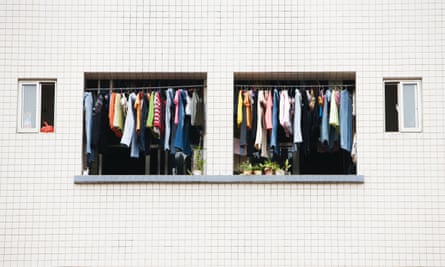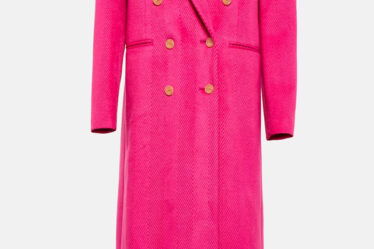
Since it doesn’t seem like there’s any way to escape the cost-of-living crisis (neither the reality nor the phrase), this week we’re exploring how to lower the cost of something equally impossible to escape: laundry.
From choosing the right wash cycle, to tips on buying and using detergent, there are a few reasonably straightforward ways to save money in the area. Happily, some even result in less laundry overall, saving time as well as cash.
Just wash less
The simplest way to save money on laundry? Do less of it!
“In general, our frequency of laundering is way above that required for sanitation,” says Georgia McCorkill, a fashion lecturer at RMIT. Rather than putting everything in the laundry at the end of the day, develop new habits and systems to keep clothes fresh.
Hang up clothes instead of leaving them on the floor, air out garments near a sunny window, and steam clothes before putting them away.
These tactics will work for larger items like jeans, jackets, shirts, coats and knitwear. Airing and steaming are especially worthwhile for dry-clean only garments, which are particularly expensive to clean. It’s also worth considering whether dry-clean only items can be hand-washed instead.
Workout gear, underwear, undershirts and T-shirts require a different approach: either ensure you own enough of these items to wait until you have a full load of laundry before washing them, or do smaller rounds of hand-washing in between. Bras and underwear, for instance, can be washed while you shower to save on water heating.
Run full loads on eco-cycles
Your washing machine is the first place to look for laundry savings. If you only do half loads when you run your machine, you are using twice the amount of power and detergent. So hold off washing until you have a full load.
Next, “check the temperature you are washing on,” says McCorkill. “Higher temperatures are going to cost more.” Your machine will likely also have an energy saving setting. “Eco-cycles are designed to use the least energy and water”.

Pay attention to your washing machine’s filter too, McCorkill says. Regularly cleaning or emptying it, as per your machine’s manual, will ensure things run efficiently.
Buy quality detergent – then use less of it
Matthew Steen, director of reviews and testing at Choice, says reducing your detergent use is an easy way to save.
“We’ve found that using a third of the recommended amount of laundry detergent still effectively cleans your clothes,” he says.
He recommends using liquid detergent over laundry pods. “Detergent pods are more expensive per wash than liquid or powder, and don’t perform as well according to our tests.”
McCorkill says it’s important to use a good-quality detergent, especially if you are looking to reduce the amount you use. She says the best-performing detergents are not necessarily the most expensive and recommends consulting the Choice website for their rankings, which also include a cost-per-wash calculation.
Additionally, she suggests purchasing large bottles on sale. “Supermarket labels will list the cost-per-volume and this is the best thing to go on as it reduces significantly for larger quantities.”
Line-dry – even indoors

Another easy way to save energy is to line-dry your laundry instead of putting it in the dryer. Steen says it costs between 28c and $1.89 to dry a load of laundry in a clothes dryer. “If you are using it every day and you can go without, it’s going to save you a bunch of money.”
Even if it’s cold and rainy outside, drying your clothes indoors using a dehumidifier is still significantly more energy efficient than using a tumble dryer, although it will take a little longer. But, as a bonus saving, line-drying is better for your clothing, meaning your garments will last longer.
No frills
Products like fabric softeners, soakers, laundry beads or in-wash scent boosters are unnecessary, says Steen, who suggests “ditching fabric softeners for good”.
Same goes for laundry beads, “which are similar to fabric softener [and] may add a whopping $371 to your annual shopping bill”.



